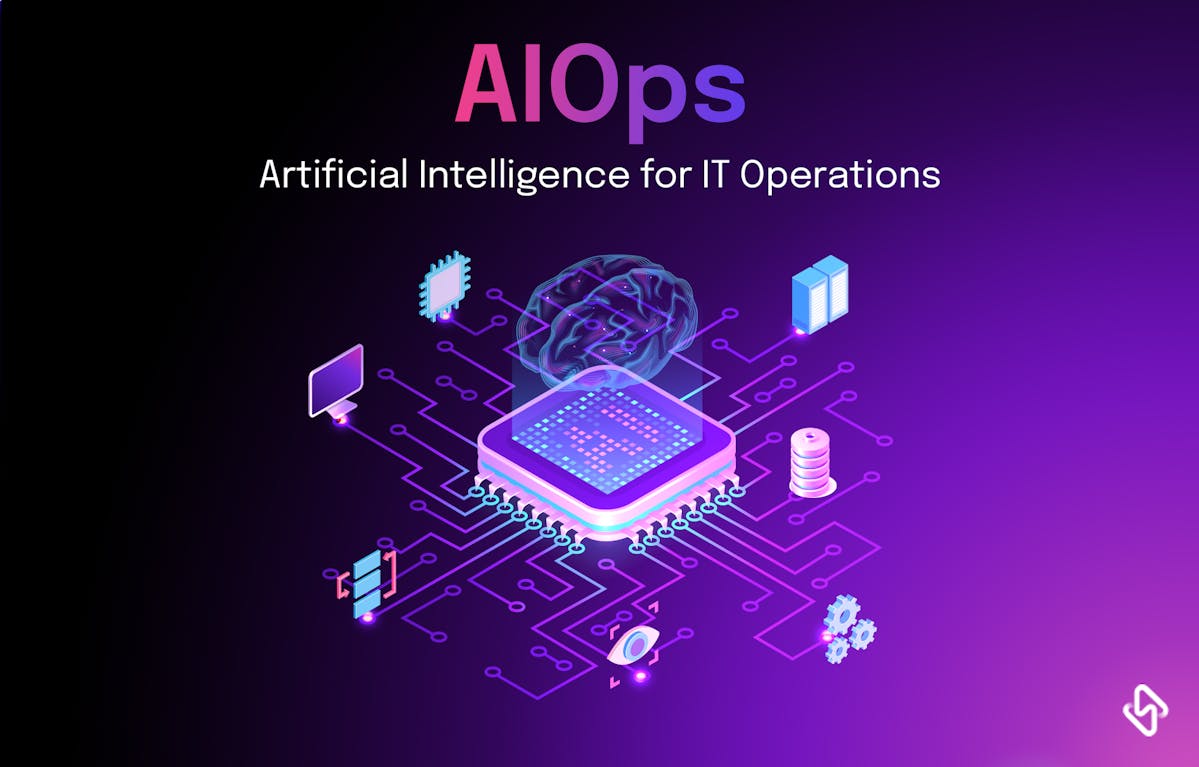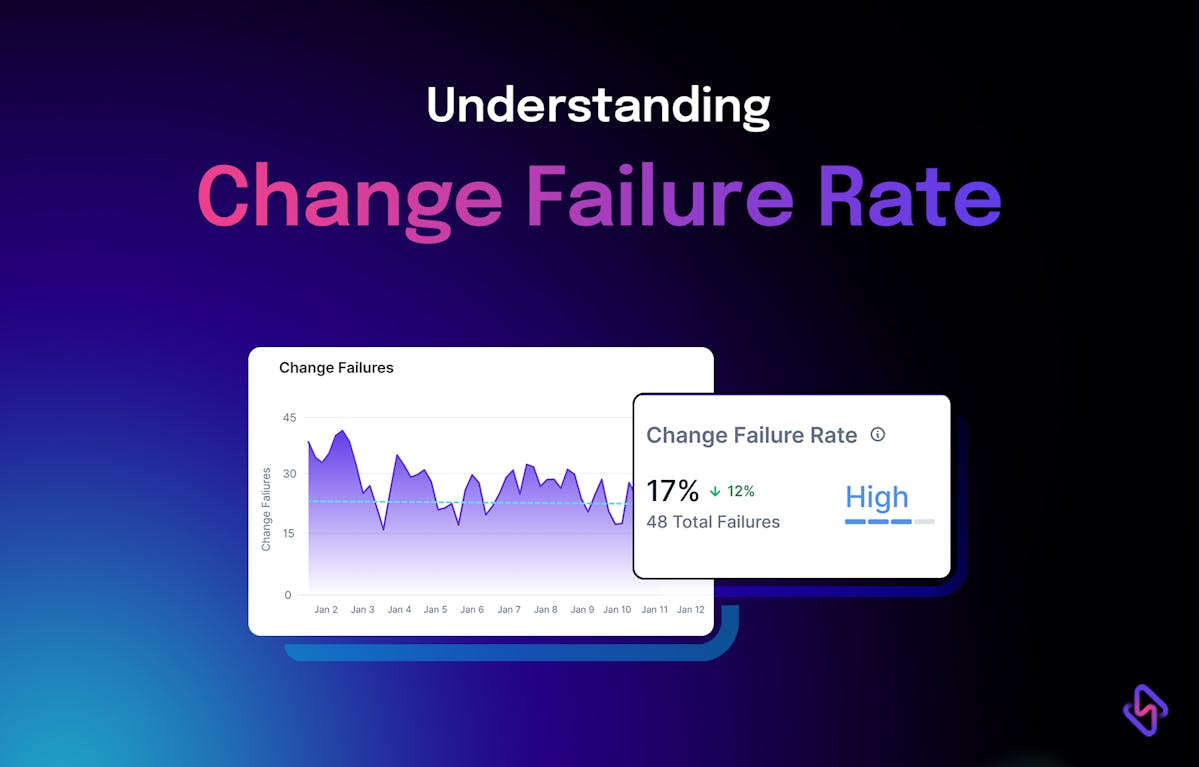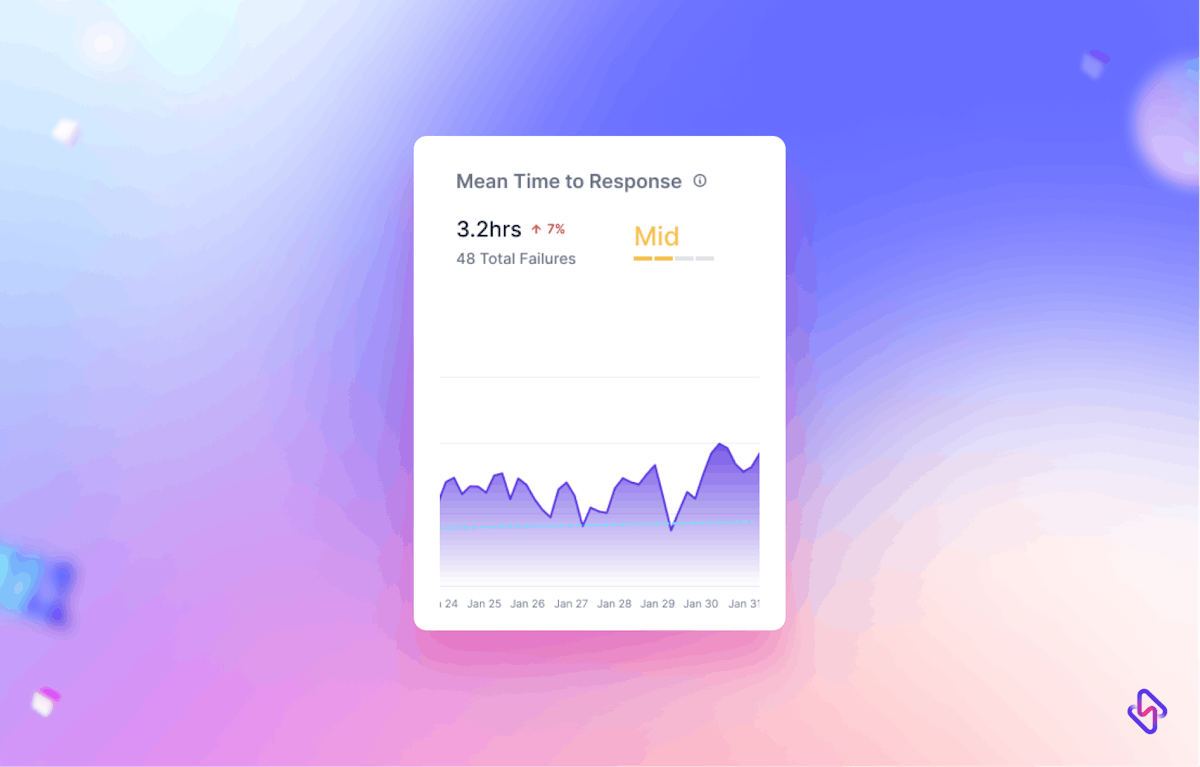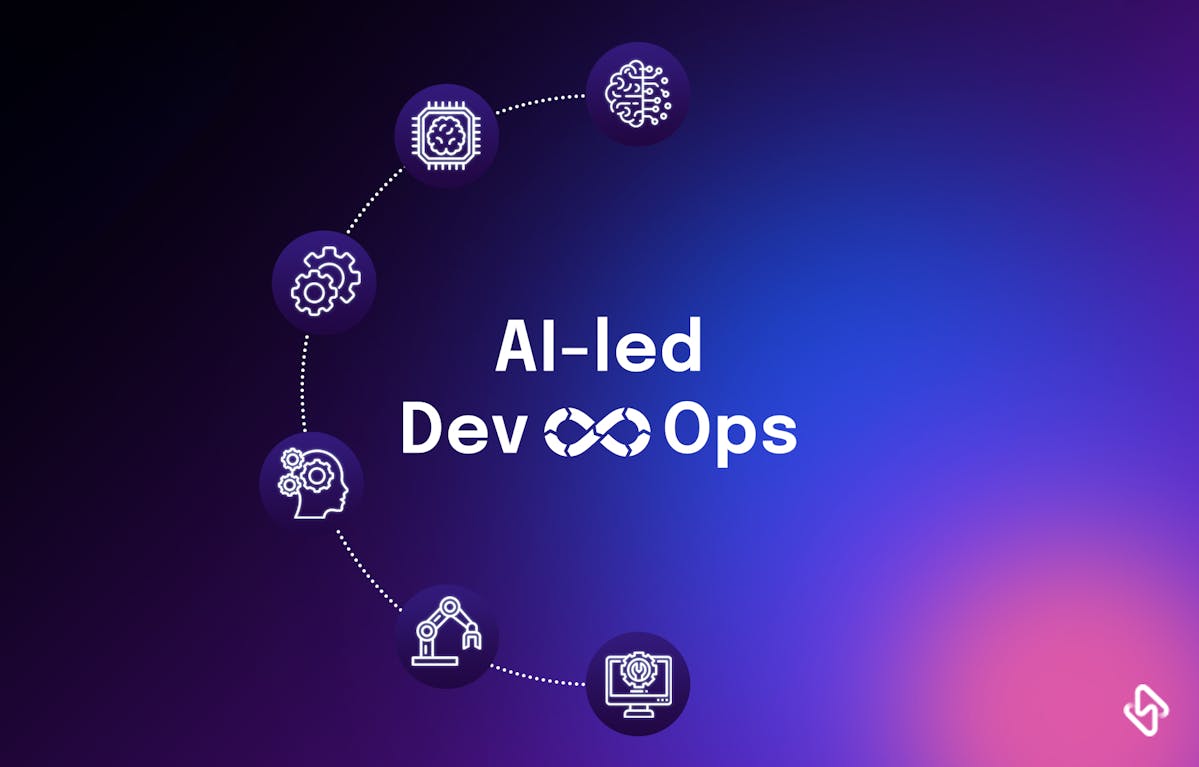As systems rapidly grow in complexity and scale, more than traditional approaches to monitoring, troubleshooting, and optimizing IT infrastructure are required.
This is where AIOps comes into play.
AIOps, short for "artificial intelligence for IT operations," represents the convergence of artificial intelligence (AI) capabilities, such as natural language processing and machine learning models, to automate and streamline operational workflows with unprecedented efficiency.
The path to AIOps adoption varies for each organization. Assessing your position on this journey is the initial step toward integrating tools that facilitate observation, prediction, and swift action in response to IT operational challenges.
In this insight, we will explore the concept of AIOps, its key components, and its role in optimizing IT infrastructure.
What is AIOps?
AIOps is a term coined from the amalgamation of artificial intelligence (AI) and IT operations (Ops). It utilizes AI techniques, such as machine learning, natural language processing, and pattern recognition, to automate and augment various aspects of IT operations. AIOps collects and analyzes massive amounts of data generated by IT systems, applications, and infrastructure components to gain insights and make informed decisions.
At its core, AIOps is a master of data. It thrives on big data sourced from various operational components and boasts the remarkable ability to detect and respond to issues in real time. Powered by machine learning, AIOps not only accumulates this wealth of data but also utilizes it to generate automated insights, perpetually refining and enhancing its problem-solving prowess.
By consolidating multiple IT operations tools into a unified, intelligent, and automated platform, AIOps empowers IT operations teams to respond rapidly and proactively to slowdowns and outages. It provides end-to-end visibility and essential context, bridging the gap between the complex, dynamic IT landscape and siloed teams. AIOps aligns seamlessly with user expectations, ensuring uninterrupted application performance and availability.
Implementing AIOps
Every organization has a different journey to achieve AIOps maturity. However, these are common features universal across AIOps implementation setup:
1. Collecting, and Processing Data
AIOps heavily relies on the collection of diverse data from various sources, including log files, monitoring tools, metrics, events, and configuration data. This data is typically gathered in real-time and at high volume to provide a holistic view of the entire IT infrastructure.
Agents or collectors are deployed on servers, network devices, and applications to gather and forward the data to the AI Ops platform. Ingestion pipelines receive the collected data and perform initial processing tasks such as parsing, filtering, and enrichment. They ensure the data is standardized and usable for further analysis.
Once the data is collected, it needs to be processed and analyzed to extract valuable insights. This involves applying various techniques, such as data cleansing, normalization, correlation, and anomaly detection. Machine learning algorithms play a crucial role in analyzing patterns, identifying trends, and detecting anomalies within the data.
The processed data is stored in data repositories or data lakes. These repositories provide scalable and efficient storage to handle large volumes of data. Applications such as Elasticsearch, and Apache Cassandra are commonly used for storing and querying the collected data. These databases support high-performance search and retrieval operations.
2. Event Correlation and Root Cause Analysis
AIOps platforms excel at correlating events and identifying the root causes of incidents or issues within the IT infrastructure. By analyzing historical data and patterns, AIOps systems can quickly pinpoint the source of a problem, reducing mean time to repair (MTTR) and minimizing downtime. Complex event processing systems detect patterns and correlations in streaming data to identify meaningful events or incidents. These systems can trigger alerts or actions based on predefined rules or machine learning models.
3. Automated Remediation
A significant advantage of AIOps is its ability to automate remediation processes. Once a problem is identified and its root cause determined, AIOps systems can trigger automated actions to resolve the issue. This can include restarting services, scaling resources, or executing predefined scripts to mitigate the problem without human intervention.
4. Predictive Analytics
AIOps enables predictive analytics by utilizing historical data and machine learning algorithms to forecast potential issues before they can occur. By analyzing patterns, system behavior, and performance trends, AIOps can predict future problems, allowing IT teams to proactively address them and prevent potential disruptions. The infrastructure for training these machine learning models typically requires high-performance computing resources. They may involve distributed computing frameworks like Apache Spark or TensorFlow's distributed training capabilities.
Role of AIOps in Optimizing IT Infrastructure
AIOps has emerged as a crucial technology in optimizing and managing complex IT infrastructures. Leveraging AI, and ML techniques to automate and enhance various aspects of IT operations, including monitoring, troubleshooting, and performance optimization.
1. Improved Visibility
AIOps provides a comprehensive and real-time visibility of the entire IT infrastructure. It enables IT teams to monitor various components and systems holistically, allowing for a deeper understanding of dependencies, performance bottlenecks, and potential risks.
2. Proactive Issue Resolution
By leveraging predictive analytics, AIOps can identify and anticipate issues before they impact end-users. This enables IT teams to take proactive measures to mitigate risks and prevent downtime, ultimately enhancing system availability and reliability.
3. Incident Management
AIOps platforms excel at quickly identifying the root causes of incidents by analyzing vast amounts of data. This accelerates the troubleshooting process and reduces mean time to resolution (MTTR), leading to faster incident response and minimized business impact. These systems can correlate events and logs from different sources, enabling IT teams to identify the root cause of incidents quickly. By automating incident workflows and leveraging historical data, AIOps facilitate faster incident resolution, reducing mean time to repair (MTTR) and minimizing the impact on business operations.
4. Intelligent Automation
AIOps enable the automation of routine tasks and remediation processes. By automating repetitive and time-consuming activities, IT teams can focus on more strategic initiatives, leading to increased efficiency and productivity.
5. Streamlined Resource Allocation, and Capacity Planning
AIOps help in optimizing resource allocation by analyzing historical usage patterns and predicting future demands. This allows IT teams to right-size resources, optimize cloud spending, and ensure optimal.
AIOps leverages predictive analytics to forecast resource demands and optimize capacity planning. By analyzing historical usage patterns, performance metrics, and business trends, AIOps systems can predict future resource requirements. This helps IT teams make informed decisions regarding resource allocation, scaling, and infrastructure expansion. Consequently, organizations can optimize their IT infrastructure's capacity, ensuring efficient resource utilization and cost optimization.
6. Proactive Monitoring
After retrieving and analyzing vast amounts of data from diverse sources such as logs, metrics, events, and configuration information. Applying machine learning algorithms, AIOps systems can identify patterns, anomalies, and performance bottlenecks in real time. This proactive monitoring helps detect issues before they impact end users, allowing IT teams to take immediate actions and prevent potential outages or disruptions.
AIOps employs machine learning algorithms to identify anomalies and performance issues in the IT infrastructure. By analyzing data from multiple sources, AIOps systems can detect abnormal behavior, deviations from normal patterns, and potential performance bottlenecks. This information enables IT teams to take proactive measures to optimize system performance, improve response times, and enhance the overall user experience.
7. Change Impact Analysis
AIOps facilitates change management by providing insights into the potential impact of configuration changes or system updates. By analyzing historical data and correlating changes with performance metrics, AIOps systems can predict the potential impact on the IT infrastructure. This helps IT teams assess the risks associated with changes, plan mitigation strategies, and minimize disruptions during change implementation.
it also automatically correlates data from various sources and identifies the underlying causes of incidents or issues. By analyzing historical patterns and relationships between events, AIOps systems can pinpoint the root cause of problems more efficiently. This accelerates troubleshooting, reduces manual effort, and enables faster problem resolution.
AIOps Tools For Your Engineering Team
When getting started with AIOps, it's essential to explore and utilize the common tools and technologies that facilitate its implementation. Here are some commonly used tools in AIOps:
Monitoring and Observability Tools
- Prometheus: An open-source monitoring system that collects and stores time-series data. It provides powerful querying capabilities and supports alerting based on defined thresholds.
- Grafana: A visualization and analytics platform that integrates with Prometheus and other data sources to create interactive dashboards for monitoring and observability.
Log Management Tools
- Elasticsearch: A distributed search and analytics engine that enables efficient storage, retrieval, and analysis of logs and other structured/unstructured data.
- Logstash: A tool for log data ingestion, processing, and enrichment. It lets you parse, transform, and send log data to various storage or analysis systems.
- Kibana: A visualization and exploration platform that integrates with Elasticsearch to provide powerful log search capabilities and real-time analysis.
Incident Management and Collaboration Tools
- PagerDuty: A platform that centralizes incident management and alerting. It integrates with various monitoring and communication tools, enabling efficient incident response and collaboration.
- JIRA: A widely-used issue-tracking and project management tool. It helps streamline incident management workflows, track tasks, and facilitate collaboration among team members.
AIOps Platforms
- Moogsoft: A leading AIOps platform that applies AI techniques for event correlation, anomaly detection, and incident management. It helps automate incident resolution and enables proactive monitoring and root cause analysis.
- BigPanda: An AIOps platform that leverages machine learning to correlate alerts, filter noise, and provide contextual insights. It enables IT teams to prioritize incidents and streamline incident response workflows.
Workflow Orchestration and Automation Tools
- Jenkins: An open-source automation server that enables the creation and management of workflows and pipelines. It integrates with various tools and allows for continuous integration and delivery (CI/CD) processes.
- Ansible: A configuration management and automation tool that simplifies the deployment and management of IT infrastructure. It allows for the creation of reusable playbooks for automated provisioning and configuration tasks.
When integrating these tools for an AI Ops project, consider the specific requirements and goals of your project. Ensure that the tools are compatible with your existing IT infrastructure, provide the necessary features and functionalities, and support integration with each other. Create a well-defined plan for implementing and configuring these tools, and consider leveraging APIs and automation techniques to streamline workflows and data exchange between the tools.
It's also worth noting that some AIOps platforms, such as Moogsoft and BigPanda, provide comprehensive solutions that incorporate multiple functionalities, including monitoring, event correlation, incident management, and automation. These platforms may offer a more streamlined and integrated approach to implementing AI Ops in your project.
However, managing AIOps becomes easier using engineering management platforms like Hatica.
Implementing AIOps using an engineering management platform streamlines the process by integrating AI-driven capabilities into a centralized hub. Here's how it works:
- An EMP gathers data from various sources, such as monitoring tools, logs, and performance metrics to bring real-time visibility and contextual insights from mulled data. This can help engineering teams to identify bottlenecks, analyze patterns, anomalies, and potential disruptive emergencies.
- Moreover, combining AIOps into your engineering management platform can automate routine tasks, such as system updates or scaling, based on the AI's recommendations. Engineering teams can use the insights provided to make informed, data-driven decisions and resolve complex issues more efficiently.
- Over time, the system becomes smarter and more effective as it learns from past data and outcomes.
Bottom Line: AIOps For Engineering Teams
In conclusion, AIOps stands as a transformative force within the realm of IT infrastructure optimization. Its fusion of artificial intelligence and operations not only streamlines traditional IT functions but also redefines the way organizations manage their digital landscapes. By automating tasks, predicting incidents, and providing actionable insights, AIOps empowers IT teams to proactively address challenges and deliver enhanced user experiences.
As technology continues to evolve, AIOps will undoubtedly play an increasingly pivotal role in driving efficiency, innovation, and agility across IT operations, solidifying its position as a cornerstone of modern IT management.






